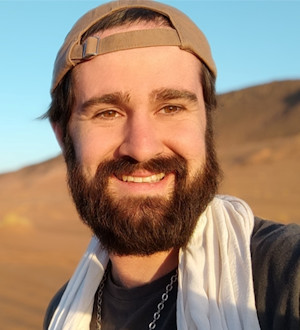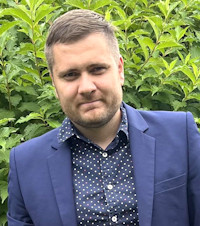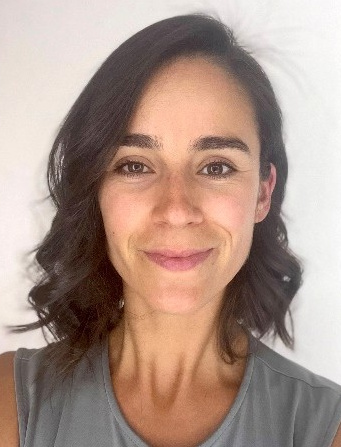Dear fellow researchers,
As we dive deep into the autumn season, we’re back with another round of exciting updates from the SFRR-E ECR community!
In this issue, we’re thrilled to announce the speakers for the 3rd PhD Symposium - get ready for an inspiring line-up of emerging redox researchers. We’re also sharing details about the SFRR-E Travel Awards for next year’s SFRR-E Annual Meeting in Mainz, so start planning your abstracts and applications! Plus, don’t miss our recaps of the September and October webinars, full of insightful discussions and take-home tips for ECRs.
And of course, as always, you’ll also find upcoming deadlines, interesting events, paper calls, fresh redox reads, and job opportunities you won’t want to miss.
Good people go…
This time, we say farewell to someone truly special - Carmen Veith.
Carmen has been the Chair of the ECR Subcommittee since its very beginning, and one of the fundamental pillars that made this team what it is today. She was the driving force who got us organized, connected, and running. We are here because of her commitment, enthusiasm, and discipline.
Carmen was involved in everything - from mentoring to events - but she brought even more energy to the conference team and social media, where her creativity and dedication shone through.
She will be greatly missed, not only for her hard work and leadership but also for her hilarious games during our meetings (especially the unforgettable Christmas sessions!). She taught us that one person can be kind, disciplined, funny, and incredibly friendly all at once.
Carmen also reminded us of the value of having a vision beyond academia, and her perspective enriched everything we did as a team.
We wish her all the very best - and much success - in her new role within the SFRR-E Council.
Thank you, Carmen, for everything. You’ll always be part of our redox family.
 3rd PhD Symposium - Meet the Speakers!
3rd PhD Symposium - Meet the Speakers!
Get ready for the 3rd edition of our PhD Symposium “Redox Relay Race: PhD Students on the Move”, coming up 18 - 19 November 2025!
We’re thrilled to present a fantastic line-up of early-career researchers from around the world who will showcase their cutting-edge work on redox biology in our signature flash talk format.
![]() Day 1 - Tuesday, 18 November 2025, 15:00 CET
Day 1 - Tuesday, 18 November 2025, 15:00 CET
• Weiwei Li - Wageningen University / Radboud University Medical Center, The Netherlands
Role of Nicotinamide Nucleotide Transhydrogenase (NNT) in cellular redox and energy homeostasis
• Lauren McKeever - Leibniz Institute for Plasma Science and Technology (INP), Germany
Modulating Cellular Redox Signalling with Medical Gas Plasma: A Novel Approach to Targeting Actinic Keratosis
• Jiayin Zheng - University Medical Center of the Johannes Gutenberg University Mainz, Germany
Pharmacological treatment with cardiovascular or neuroactive drugs as a mitigation strategy against aircraft noise-induced cardiovascular and cerebral damage
• Rayen De Fazio - CONICET - National University of La Plata, Argentina
Mitochondrial NHE1 mediates ROS-dependent mPTP opening via hyperpolarization
• Yanislav Hrytseniuk - University Medical Center of the Johannes Gutenberg University Mainz, Germany
Impact of CO in shisha smoke/aerosol on health effects in mice - insights from comparison of coal and electric heating
• Arijan Valar - University Medical Center of the Johannes Gutenberg University Mainz, Germany
Preadiposity and prediabetes biomarker screening in subchronic aircraft noise exposure mouse models
• Shani Doron - The Robert H. Smith Institute of Plant Sciences and Genetics in Agriculture, The Hebrew University of Jerusalem, Israel
Two opposing redox signals mediated by 2-Cys Prx shape the redox proteome during the photosynthetic induction phase
• Eva Martín-Prieto – Institute of Neurosciences of Castilla y León (INCYL), Institute of Biomedical Research of Salamanca (IBSAL), University of Salamanca, Spain
Reactive oxygen and nitrogen species (RONS) as regulators of glucose uptake and insulin resistance in diabetes and ageing
• Lucas Carvalho - Carlos Chagas Filho Institute of Biophysics, Federal University of Rio de Janeiro, Brazil
Sex-dependent effect of aging on NAD⁺ metabolism and redox homeostasis in visceral adipose tissue
![]() Day 2 – Wednesday, 19 November 2025, 15:00 CET
Day 2 – Wednesday, 19 November 2025, 15:00 CET
• Valentin Kapferer - Friedrich-Alexander-Universität Erlangen-Nürnberg, Germany
From MAAFs to DAAFs: Improving stability and anticancer activity of aminoferrocene-based ROS catalysts
• Manjeera Nath - INRES-Chemical Signalling, University of Bonn, Germany
Decoding the functions of Tau Glutathione transferases in Arabidopsis
• Andrea Bianchi – University of L’Aquila, Italy
Resveratrol counteracts redox imbalance and mitochondrial dysfunctions induced by nano and microplastics in human granulosa cells
• Sara Melija - University of Ferrara, Italy
ER–mitochondria associated membranes (MAMs) dysfunction in Rett syndrome: investigating calcium signalling alterations and potential therapeutic strategies
• Julia Souza - University of São Paulo School of Medicine, Brazil
Exacerbated vascular remodeling in mice overexpressing the dithiol oxidoreductase protein disulfide isomerase-A1
• Manuela Hidalgo - Biomedicine Research Institute Sols-Morreale (IIBM, CSIC-UAM), Spain
Loss of mitochondrial plasticity negatively impacts on HCC development in the context of MASLD
• Laura Gemmo - University of Ferrara, Italy
Dysregulation of the PI3K/Akt–FoxO3a axis under oxidative or metabolic stress in Rett syndrome
• Niki Astropekaki - University of Crete - Institute of Molecular Biology and Biotechnology (IMBB), Greece
Developmental oxidative stress enhances later-in-life immune defences and fitness of the C. elegans host
• Giulia Trinchera - University of Ferrara, Italy
Marine red algae as a new technology for preventing UV skin damage
We can’t wait to see these talented PhD researchers share their discoveries and spark new discussions in the redox community! See you at the symposium!
 SFRR-E Travel Awards - Mainz 2026
SFRR-E Travel Awards - Mainz 2026
Ready to take your science on the road?
We’re excited to announce that SFRR-E Travel Awards will be available for students and postdocs to attend the 2026 SFRR-E Annual Meeting “Redox Biology, Environment Exposures and Lifestyle”, taking place in Mainz, Germany (3-5 June 2026).
What’s on offer?
Europe-based applicants: €400 travel grants for PhD students or postdocs (≤5 years post-PhD, non-permanent positions).
Outside Europe: €900 travel awards for SFRR-E or Regional SFRR Society members under the same conditions.
(Note: previous SFRR-E Travel Grant or Young Investigator Award recipients are not eligible.)
Who can apply?
PhD students and postdocs who are current members of SFRR-E (or a Regional SFRR Society outside Europe) and meet the eligibility criteria above.
How to apply
Submit your application as a single PDF via the SFRR-E intranet (https://intranet.sfrr-europe.org) and select the option “Travel Awards for SFRR-E Mainz” in the menu on the left.
Your PDF should include:
-
- CV (max 2 pages, including PhD start/award date)
- Motivation letter
- Abstract intended for presentation
(Incomplete applications will not be considered.)
Important dates
- Deadline: 12 January 2026
- Results announced: before 26 January 2026 (abstract submission deadline)
- Funds will be transferred after proof of registration and abstract submission.
- Conference website: www.sfrremainz2026.com
- Questions? Contact
This email address is being protected from spambots. You need JavaScript enabled to view it.
Don’t miss your chance to join us in Mainz - and take your redox research further than ever!
Summary of September’s webinar:
On September’s webinar we learnt about ”Redox regulation in cellular aggregates” with two wonderful talks by Avilien Dard and Thibaut Vignane. If you didn’t have a chance to follow the webinar, here’s a summary for you.

Unveiling redox-regulation of protein phase separation during heat stress
Avilien Dard, PhD
Center for Plant Systems Biology, Vlaams Instituut voor Biotechnologie, Ghent University, Belgium
Does the heat stress you? Plants are normally exposed to a wide-range of environmental challenges such as heat. Which, inevitably, will lead to an increase in intracellular reactive oxygen species (ROS). ROS are key signaling molecules that modulate plant responses, but if not detoxified, will cause oxidative damage and ultimately, cell death. In this webinar, Avilien Dard shared with us his work on how ROS generated during heat stress can diffuse within plant cells and particularly oxidize the nucleus earlier than other sub-compartments. He further explored the heat-induced signaling response by characterizing its connection with Histone deacetylase 6 (HDA6), a protein localized in both the nucleus and cytosol, and the observed rise in nuclear ROS. Interestingly, HDA6 appears to be contained in heat-induced stress granules, whose formation appears to be regulated by the cellular redox state. Using genetically encoded fluorescent biosensors, Avilien is now deciphering how these stress granules are more oxidized than their surrounding cytoplasm, providing new insight into redox control during plant heat stress responses.
 Protein thiol alterations drive pathologic liquid-liquid phase separation in the aging brain
Protein thiol alterations drive pathologic liquid-liquid phase separation in the aging brain
Thibaut Vignane, PhD
Institute of Molecular Systems Medicine, Goethe University Frankfurt am Main, Germany
Keeping proteins young with H₂S. Hydrogen sulfide (H₂S), produced by cystathionine gamma lyase (CSE) among other enzymes, have an important role in slowing aging and protecting the organisms against neurodegeneration. Its signalling function depends on protein persulfidation, a post-translational modification (PTM), in which H₂S reacts with cysteine residues, protecting them from irreversible overoxidation. In this webinar, Thibaut Vignane presented a widespread proteomic analysis showing that protein persulfidation declines with age, particularly in brain cells, while oxidative modifications such as sulfenylation and sulfonylation increase. Using mice deficient in CSE, he has demonstrated how the lack of H₂S leads to higher levels of overoxidized cysteines and enhanced protein aggregation. Interestingly, many of the sulfenylated and persulfidated proteins found are also involved in phase-separation, suggesting a link between persulfidation and protein aggregation. Two key candidates arise from his analysis: Synapsin-1 (SYN1) and G3BP2, both critical for neuronal function. In young cells, persulfidation of SYN1 prevents excessive oxidation and protein-aggregation, whereas in aging cells, reduced H₂S levels favour sulfenylation and phase separation. Similarly, sulfenylation of G3BP2 in older cells enhances stress granule formation. Aggregates that can be dissolved by the external addition of H₂S. Thibaut’s findings highlight a pivotal role of H₂S in the redox-dependent shift from protective persulfidation to potentially damaging sulfenylation during aging.
Summary of October’s webinar:
On October’s webinar we dove into the fascinating topic of “Redox in Plants” with two outstanding talks by Petr Dvorac and Stephanie Frohn.

Copper-dependent control of iron superoxide dismutase 1 links plant development to oxidative stress resilience
Petr Dvorac, PhD
Department of Biotechnology, Faculty of Science, Palacky University Olomouc, Czech Republic
Balancing metals, balancing ROS. Superoxide dismutases (SODs) are important enzymes that catalyze the dismutation of superoxide radicals (O₂⁻) - by-products of photosynthesis and mitochondrial respiration - into the less reactive, and more stable hydrogen peroxide (H₂O₂). The model plant Arabidopsis thaliana encodes seven SOD isoforms, classified according to their active site cofactors into one manganese SOD (MSD1), three iron SODs (FSD1, FSD2 and FSD3), and three cupper/zinc SODs (CSD1, CSD2 and CSD3). In his presentation, Petr Dvořák highlighted how metal availability, especially copper, governs the balance between these SOD types. When grown in copper-limiting conditions, plants upregulate FSD1 to compensate for the reduced activity of Cu/ZnSODs. Conversely, in copper-rich conditions, the expression of CSD1 and CSD2 increases, compensating the FSD1’s protective role against the oxidative stress-imposed methyl viologen, an herbicide that promotes O₂⁻ production. Together, these findings underscore that FSD1 and CSD2 function as complementary redox protective systems against oxidative stress, and that their abundance is tightly regulated by metal availability. Current research done by Petr, explores possible noncanonical nuclear roles of FSD1, such as involvement in alternative splicing or transcriptional co-activation, expanding our view of how redox enzymes contribute to stress adaptation beyond their classical antioxidant functions.

Role of CuZnSODs on early land plant evolution and development
Stephanie Frohn, PhD
Group Cytoplasmic Inheritance, Department Plant Physiology, WUR Wageningen, Netherlands
Way beyond antioxidants: decoding the moonlighting roles of CSD1. While flowering plants such as Arabidopsis thaliana (Arabidopsis) have three cupper/zinc superoxide dismutases (CSDs), early land plants like the liverwort Marchantia polymorpha (Marchantia) contain only one. In this webinar, Stephanie Frohn explored the multifaceted “moonlighting” functions of CSD1 in Arabidopsis, extending far beyond its classical antioxidant role. Here we learned that CSD1 acts not only as an enzyme dismutating superoxide radical (O₂⁻) into hydrogen peroxide (H₂O₂) but also functions as a developmental regulator during plant embryogenesis and a transcriptional regulator influencing processes such as anthocyanin biosynthesis. Both Marchantia and Arabidopsis displayed strong developmental defects when treated with LCS-1, a broad SOD inhibitor. Developmental phenotypes that were also observed in lines deficient in CSD1 for both plant species. These findings reveal that CSD1 is capable of integrating redox control with developmental and transcriptional regulation, highlighting an evolutionarily conserved role of CSDs in plant growth and stress responses-one that transcends their canonical function as mere antioxidant enzymes.
Remember that you can also watch recordings of the webinars through the SFRR-E intranet!
Want to know more about what we do? You’ll find all the info about the ECR Subcommittee on the SFRR-E website.
For regular updates, follow us on Instagram (@sfrr_ecr), Bluesky (@sfrre-ecr.bsky.social) Twitter/X (@SFRR_Europe), and LinkedIn (SFRR-E).
Got a question, idea, or just want to say hi? Drop us an email at
- The ECR Subcommittee Team
 Upcoming Events You Won’t Want to Miss:
Upcoming Events You Won’t Want to Miss:
SfRBM 2025 - 32nd Annual Conference
- Society for Redox Biology & Medicine
- Washington DC | 19–22 November 2025
- Abstract deadline: 6 September | Early registration deadline: 15 October
- More info
SFRR-E Annual Meeting
- Redox Biology, environmental exposures and lifestyle
- Mainz, Germany | 3–5 June 2026
- Abstract submission and registration will open 1 November
- Call for Symposia and Honorary Lectures deadline: 20 September
- More info
 Redox Reads Worth Your Time:
Redox Reads Worth Your Time:
![]() Research Articles
Research Articles
Vorhauser, J., Roumeliotis, T.I., Coupe, D., et al. A redox switch in p21-CDK feedback during G2 phase controls the proliferation-cell cycle exit decision. Mol Cell (2025). https://doi.org/10.1016/j.molcel.2025.07.023
Zarges, C., Fieler, H., Rothemann, R.A., et al. The mitochondrial disulphide relay substrate FAM136A safeguards IMS proteostasis and cellular fitness. Redox Biol (2025). https://doi.org/10.1016/j.redox.2025.103884
Wang, YC., Wu, PH., Ting, WC. et al. Single-cell signaling network profiling during redox stress reveals dynamic redox regulation in immune cells. Nat Commun (2025). https://doi.org/10.1038/s41467-025-60727-z
Gotthardt, G., Weckesser, J., Tascher, G., et al. Cysteine-reactive covalent chloro-N-acetamide ligands induce ferroptosis mediated cell death. EMBO Rep (2025). https://doi.org/10.1038/s44319-025-00593-4
Carlein, C., Hoffmann, M.D.A., Bickelmann, C., et al. Adaptive mechanisms in pancreatic islets counteract mitochondrial dysfunction in Barth syndrome. Diabetologia (2025). https://doi.org/10.1007/s00125-025-06575-4
Casas-Martinez, J.C., Xia, Q., Li, P. et al. Adaptive ER stress promotes mitochondrial remodelling and longevity through PERK-dependent MERCS assembly. Cell Death Differ (2025). https://doi.org/10.1038/s41418-025-01603-7
 Reviews to Think About
Reviews to Think About
Caporossi, D., Jackson, M.J. & Henriquez-Olguin, C. Intracellular and Extracellular Redox Signals During Exercise and Aging. Free Radic Biol Med (2025). https://doi.org/10.1016/j.freeradbiomed.2025.10.283
Mao, C., Jiang, D., Koong, A.C. et al. Exploiting metabolic cell death for cancer therapy. Nat Rev Cancer (2025). https://doi.org/10.1038/s41568-025-00879-8
Jeria-Espinoza, V., Henriquez-Olguin, C., Opazo-Diaz, E. & Marchini, T. Redox biology at the intersection of physical activity and air pollution: Mechanisms, consequences, and complexity. Free Radic Biol Med (2025). https://doi.org/10.1016/j.freeradbiomed.2025.09.047
Xu, Y., Xie, W. & Zhang, J. Metabolic regulation of key developmental events during mammalian embryogenesis. Nat Cell Biol (2025). https://doi.org/10.1038/s41556-025-01720-y
Margaritelis, N.V. & Nikolaidis, M.G. Science captured by storytelling: the oxidative stress narrative. Trends Mol Med (2025). https://doi.org/10.1016/j.molmed.2025.09.004
 New Protocols
New Protocols
Potekhina, E.S., Bass, D.I., Ezeriņa, D. et al. A color-tailored fluorogenic sensor for hydrogen peroxide. Nat Chem Biol (2025). https://doi.org/10.1038/s41589-025-02036-6
Eid, M., Barayeu, U. & Dick, T.P. Chemogenetic detection and quantitation of H2O2 in living cells. Nat Protoc (2025). https://doi.org/10.1038/s41596-025-01226-9
 Preprints We’re Watching
Preprints We’re Watching
Meneses-Valdés, R., Gallero, S., Hentze, J., et al. Chemogenetic Mitochondrial H2O2 Generation Triggers Dose-Dependent Skeletal Muscle Wasting Signatures. BioRxiv (2025). https://doi.org/10.1101/2025.08.19.671046
de Souza, I., Marques Andrade, I.A., Porto Freitas, F., et al. HMOX1 controls a heme–ferritin switch that protects cells from ferroptosis. BioRxiv (2025). https://doi.org/10.1101/2025.10.14.682408
Inaba, K., Amagai, Y., Arai, C., et al. Zinc-redox crosstalk regulates proteostasis in the endoplasmic reticulum. Research Square (2025). https://doi.org/10.21203/rs.3.rs-7251469/v1
 Call for Papers:
Call for Papers:
Journal: Redox Biochemistry and Chemistry
- Special Issue: Redox Metals in Health and Disease
- Submission Deadline: 31 December 2025
- More info
Journal: Redox Biology
- Special Issue: The role of nitric oxide in redox signaling and disease: shaping the future with emerging leaders
- Submission Deadline: 31 December 2025
- More info
 Redox Jobs Board:
Redox Jobs Board:
Type of position: PhD position
- Research topic: A novel redox mechanosignalling nexus in the synapse that is misregulated in neurodegeneration
- Institute or university: The University of Liverpool and The University of Manchester, UK
- Deadline: Sunday, December 07, 2025
- Contact info: (
This email address is being protected from spambots. You need JavaScript enabled to view it. ) and/or Paraskevi Kritsiligkou (This email address is being protected from spambots. You need JavaScript enabled to view it. ) - Information about the project: https://www.findaphd.com/phds/project/bbsrc-nwd-a-novel-redox-mechanosignalling-nexus-in-the-synapse-that-is-misregulated-in-neurodegeneration/?p190348
- Information about the PhD programme: https://www.bmh.manchester.ac.uk/study/research/funding-fees/funded-programmes/bbsrc-nwdp/
Type of position: PhD position
- Research topic: Extending solar energy capture into the far-red via synthetic biology
- Institute or university: The University of Liverpool and The University of Manchester, UK
- Deadline: Sunday, December 07, 2025
- Contact info: Dan Caniffe (
This email address is being protected from spambots. You need JavaScript enabled to view it. ) - Information about the project: https://www.findaphd.com/phds/project/bbsrc-nwd-extending-solar-energy-capture-into-the-far-red-via-synthetic-biology/?p190384
- Information about the PhD programme: https://www.bmh.manchester.ac.uk/study/research/funding-fees/funded-programmes/bbsrc-nwdp/
Type of position: PhD position
- Research topic: How do La-related proteins promote protein synthesis during the cellular oxidative stress response
- Institute or university: The University of Manchester, UK
- Deadline: Sunday, December 07, 2025
- Contact info: Graham Pavitt (
This email address is being protected from spambots. You need JavaScript enabled to view it. ) - Information about the project: https://www.findaphd.com/phds/project/bbsrc-nwd-how-do-la-related-proteins-promote-protein-synthesis-during-the-cellular-oxidative-stress-response/?p190476
- Information about the PhD programme: https://www.bmh.manchester.ac.uk/study/research/funding-fees/funded-programmes/bbsrc-nwdp/
Type of position: PhD position
- Research topic: The Interplay between mechanotransduction and redox signalling in organismal ageing
- Institute or university: Babraham Institute, University of Cambridge, UK
- Deadline: Monday, November 24, 2025
- Contact info: Hayley Sharpe
- Information about the project: https://www.findaphd.com/phds/project/the-interplay-between-mechanotransduction-and-redox-signalling-in-organismal-ageing/?p187248
- Information about the PhD programme: https://www.babraham.ac.uk/work-and-study/phd-programme/phd-applications
Got a position open for a PhD student, postdoc, or technician in redox research?
Want to feature it in our next newsletter? Send us the details at
- Type of position (PhD student, Postdoc, etc)
- Research topic
- Institute or university
- Deadline
- Contact info
- Additional details or link

 Cardiac Mitochondrial Heterogeneity and Bioenergetics Are Shaped by Intracellular Ribosome Distribution
Cardiac Mitochondrial Heterogeneity and Bioenergetics Are Shaped by Intracellular Ribosome Distribution Adaptive Mechanisms in Pancreatic Islets Counteract Mitochondrial Dysfunction in Barth Syndrome
Adaptive Mechanisms in Pancreatic Islets Counteract Mitochondrial Dysfunction in Barth Syndrome To make things even more exciting, we’re also introducing a brand-new collaboration with our colleagues from the SFRR Australasia, culminating in a special joint “Redox Jamboree” in May 2026.
To make things even more exciting, we’re also introducing a brand-new collaboration with our colleagues from the SFRR Australasia, culminating in a special joint “Redox Jamboree” in May 2026. , and join us online for an inspiring session! We look forward to seeing you there and to another season of exciting science
, and join us online for an inspiring session! We look forward to seeing you there and to another season of exciting science